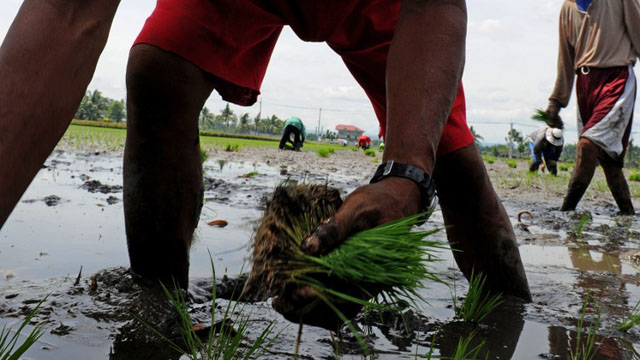SUMMARY
This is AI generated summarization, which may have errors. For context, always refer to the full article.

MANILA, Philippines – The declining share of agriculture in the Philippine economy could be a reason for the country’s high poverty incidence.
In his Beyond the Numbers note on Friday, April 12, NSCB Secretary General Jose Ramon Albert said the agriculture sector’s share in the Philippine economy has significantly declined to only 11.1% in 2012.
Albert said the decline in the share of agriculture was significant since in 1946, the sector accounted for about a third or 29.7% of the Philippine economy.
“While the economy is growing, there may be a need to examine the agriculture sector more carefully, since official poverty statistics (dating as far back as 1985 up to the most recently released figures in 2009) show that the concentration of the poor has been in the entire agriculture sector,” Albert said.
“Many resources have been devoted by past administrations to agricultural modernization, the provision of agricultural inputs, and agrarian reform, but the Philippines continues to face a lot of challenges particularly to uplift the farmers out of poverty,” he added.
NSCB noted that the region where agriculture played a significant part is the Autonomous Region of Muslim Mindanao (ARMM) where most of the country’s poor are. Agriculture accounts for 63% of ARMM’s economy while poverty incidence in the region remains one of the highest in the country at 45.6% in 2009.
Lowest-paid workers
Data also showed that 36.6% of the country’s total labor force is engaged in agriculture in the past 20 years. In 2010 alone, some 31.2% of the labor force is working in the sector.
Despite their numbers and importance to daily life in the country, agriculture-based workers receive the lowest salaries and wages in the Philippines. Farmers and fisherfolk are the lowest paid workers in the country and receive an average daily wage of P156.8 and P178.43 in 2011, respectively.
“It was also noted that wage and salary received by those in agriculture are comparable to those of private households with employed persons (i.e., domestic helpers) at P138.99 [per day],” the NSCB said.
With this, the NSCB said it was “not surprising” that poverty incidence is highest among fishermen at 41.4% and farmers at 36.7% in 2009. The nationwide poverty incidence was at 26.5% in 2009.
Farmers in Zamboanga Peninsula had the highest poverty incidence at 54% while fisherfolk in CARAGA had the highest poverty incidence at 59.2%.
Further, Albert noted that the bulk of working children aged 5 to 17 years old are employed in the agriculture sector. It is estimated that 56.6% of these children are engaged in agriculture-related work.
“The most number of children working in Agriculture are found in Northern Mindanao, which in 2009, is a region with one of the highest poverty incidences for farmers (52.3%). Eastern Visayas has the most number of children working in the fishing industry at 14.5%,” the NSCB said.
Trickle down
Balisacan said on January 23, however, that before agriculture growth can trickle down to the poor however, the sector must sustain a growth of at least 4% for several years.
The country’s MDG performance has not changed much. The Philippines is still far from attaining the goals on poverty and hunger, according to a report released by non-government organization Social Watch Philippines (SWP).
There are 8 MDGs, and the first one calls for a reduction in poverty and hunger by half. The Philippines committed in 2000 to meet the MDGs by 2015, but the country is unlikely to do this, said Balisacan. – Rappler.com
Add a comment
How does this make you feel?
There are no comments yet. Add your comment to start the conversation.